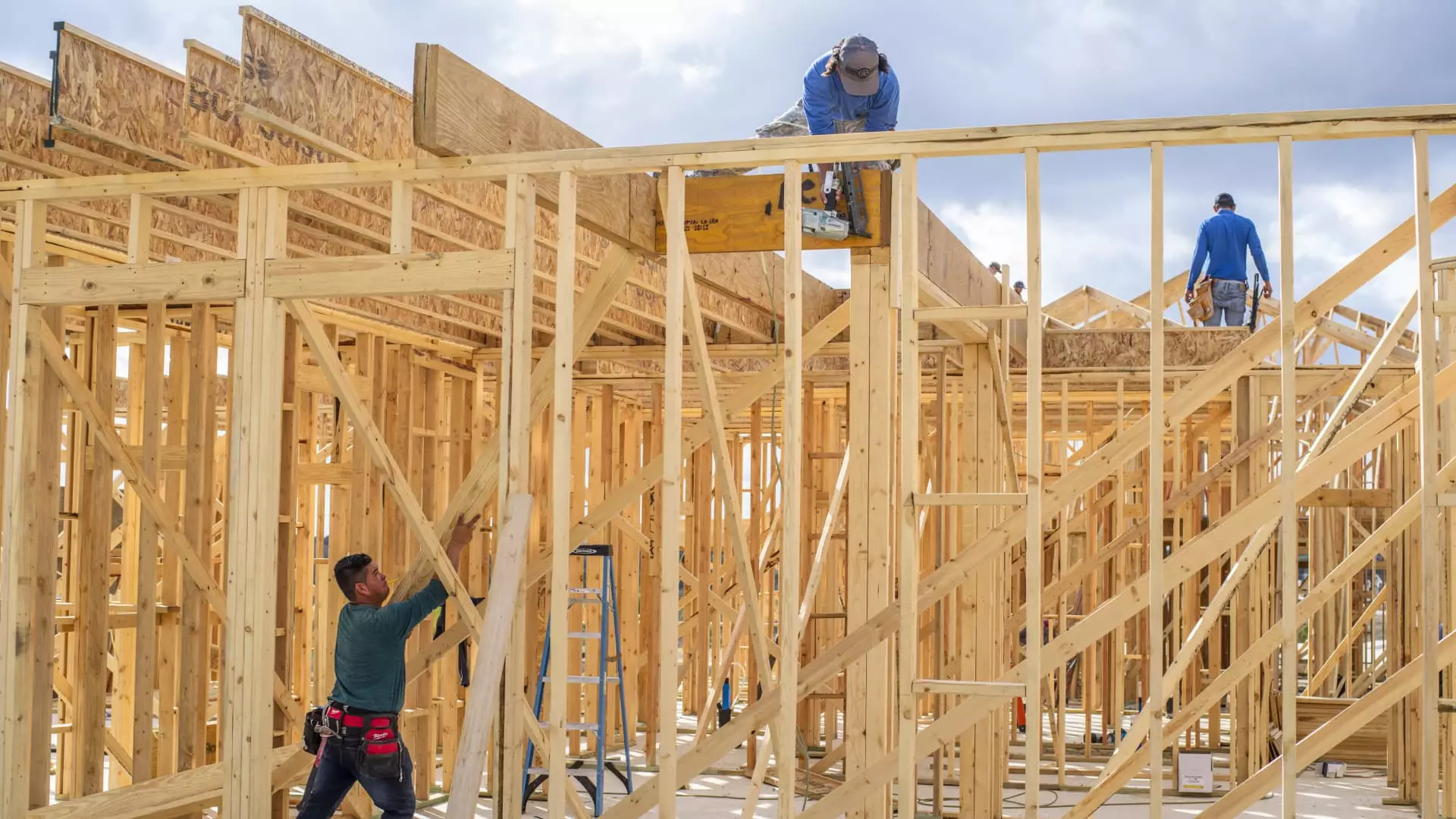In February, the sentiment among single-family homebuilders in the United States plummeted, marking the lowest confidence level seen in the past five months. According to the National Association of Home Builders (NAHB), the Housing Market Index (HMI)—a vital gauge for the sector—experienced a notable decline of five points, bringing it down to 42. This figure indicates a troubling trend as any score under 50 reflects negative sentiment. Comparatively, the index was only slightly higher at 48 in February of the previous year, highlighting a significant downward shift in builder confidence.
A primary factor behind this drop is the anxiety surrounding tariffs that threaten to inflate construction costs dramatically. Builders are particularly concerned about the tariffs on materials sourced from Canada and Mexico, especially as a significant portion of appliances and softwood lumber utilized in construction originates from international trade. According to NAHB Chief Economist Robert Dietz, uncertainty regarding tariffs has compounded builders’ worries about escalating costs, which, in turn, jeopardizes future projects.
Carl Harris, the NAHB Chairman and a homebuilder based in Wichita, Kansas, expressed that while there is tentative optimism regarding potential regulatory reforms that could assist the building industry, the prevalent policy uncertainty and higher costs have compelled the industry to recalibrate its expectations for 2025. As builders grapple with these challenges, it becomes evident that the outlook for the housing sector may be dimming.
The detail underneath the HMI reveals that all three components of the index suffered declines. Current sales conditions dropped four points to 46, reflecting a significant dip in perceived market activity. Moreover, buyer traffic also fell by three points, landing at a mere 29—a clear sign that potential homebuyers are becoming increasingly hesitant. Most concerning is the drastic 13-point plunge in sales expectations for the next six months, which reached a record low since December of the previous year.
These figures are corroborated by elevated mortgage rates, which for both January and February exceeded 7%, compared to a previous range of around 6%. As home prices also rise, the combination of factors is effectively squeezing buyers, further complicating the housing market dynamics.
The current economic landscape reflects heightened challenges for potential homeowners. Builders have noted a marked decline in buyer demand, which was underscored during recent earnings reports from industry leaders. PulteGroup’s CEO, Ryan Marshall, highlighted that despite actions taken by the Federal Reserve to stimulate short-term interest rates, home mortgage rates have remained high, adversely affecting buyer demand. This scenario is creating a feedback loop where higher interest rates deter buyers, worsening demand.
As confidence wanes, the overall picture indicates potentially dwindling supply in the housing market, particularly as the spring selling season approaches—a crucial period for home sales. The anticipation of a robust spring market may be tempered by the current sentiment among builders, signaling a potential slowdown.
Interestingly, indications from builders suggest a notable drop in the number resorting to price reductions, with the share of builders lowering prices falling to 26%. This statistic, which is the lowest recorded since May 2024, may reflect a recognition among builders that incentives are losing their effectiveness in attracting buyers, especially in an environment characterized by high prices and interest rates. With many potential buyers priced out of the market, no incentive can significantly alter purchasing decisions.
As builders confront these economic realities, the traditional strategies to stimulate demand may require reevaluation. Furthermore, the issue is exacerbated when incentives are provided to buyers who are likely to purchase regardless of pricing pressures, diluting the overall efficacy of sales tactics.
The current landscape for homebuilders is one of complexity, marked by a declining sentiment, rising costs, and shifting buyer behavior. As they strive to navigate these challenges, it is clear that any potential recovery in the sector hinges on a resolution to the uncertainties surrounding tariffs, mortgage rates, and broader economic stability. The coming months will be critical in determining whether builders can regain confidence and adapt to restore vitality to the housing market.

